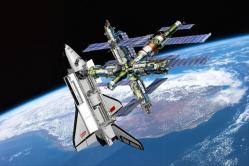Antipyretics for children are prescribed by a pediatrician. But there are emergency situations for fever when the child needs to be given medicine immediately. Then the parents take responsibility and use antipyretic drugs. What is allowed to give to infants? How can you bring down the temperature in older children? What medicines are the safest?
For the human body to do its job muscle in a normal state should be even and elastic. Depending on his will, muscle tissue can be equally tense or equally relaxed. But we are constantly faced with a situation where areas (or even groups of muscle fibers and whole muscles) can appear in various places on the human body, in which tension, regardless of the desire of this person, is maintained and maintained. Such areas can be both large and very small, they can be perceived by consciousness as a spasm, tension, or they may not be noticed at all.
What is the harm from muscle tension and spasms?
- The first answer to this question lies on the surface: if the muscle is spasmodic, it pinches blood vessels and nerve fibers. As a result, nutrition and energy-informational exchange are disturbed both in the tissues of the muscle itself and in those internal organs, to which the clamped vessels and nerves provide nutrition and innervation. For example, the vagus nerve is pinched in the neck area, impulses do not pass through it to the pancreas, which causes a violation of the innervation of the organ with corresponding enzymatic disorders of the gastrointestinal tract.
- The second negative result: a spasmodic muscle is a contracted muscle, ATP is required to maintain it in a tense state - certain energy costs. That is, to maintain the muscle in a state of tension, the body's own energy is spent, and the tension that has arisen not only does not benefit, but also harms the body (see paragraph 1). Given that the areas in which muscle tension has arisen can be quite extensive, and the tension is maintained constantly (even during sleep), the body's energy consumption for irrational and harmful work can be quite significant.
There is a third negative consequence, which we will talk about a little later.
Symptoms
Usually, when examined by a doctor, trigger (pain) zones can be found in the muscle that straightens the back or lifts the scapula, in the trapezius muscle, as well as in some others. With muscle tension, the patient may feel:
- aching, itching, pressing pain
- worsening or lessening of near-constant pain
- reflection of pain in the shoulder, eye, head
- the impossibility of making full range of hand movements or head turns.
Causes
The main causes of muscle spasms are:
- osteochondrosis, as well as its manifestations, expressed in the form of protrusions, herniated discs
- injuries and bruises of the spine, in which, in response to pain, muscle tension occurs and a trigger syndrome develops
- static muscle tension of a long-term nature, which can occur when a person sitting at a table or working at a computer has an incorrect posture, when carrying a bag on one shoulder (when one shoulder becomes higher than the other)
- emotional stress, causing an increase in muscle tone.
Why do muscle tension and spasm occur?
Muscle spasms are painful convulsive muscle contractions that occur involuntarily during or immediately after exercise.
The cause of spasms depends on various causes and is not yet fully understood. However, there are some common causes, which determine the nature of the origin of muscle tension.
electrolytes
In the likely appearance of muscle spasms, the state of hydration of the human body plays a key role. In the gym, you can see people consuming vitamin drinks while exercising. They do it for a reason.
Vitamin drinks contain an optimally balanced concentration of sodium, potassium and calcium. These trace elements have a beneficial effect on the functioning of muscles and nerves. If the balance of these electrolytes is disturbed (which is possible when a person sweats a lot), problems can arise.
The same thing can happen if you start drinking a lot of water during exercise. Many people do a set and immediately drink water, do the next set and drink again. At the same time, they are sure that in this way they help their body.
Everyone knows that the human body is three-quarters water. During intense exercise, sodium is released along with sweat, which does not replace anything. When a person drinks water, he replaces one released liquid with another, which is not similar - it lacks a key mineral component. This may be the reason that the functioning of the muscles deteriorates.
In addition, when exercising in a very hot room, this process is complicated: a person not only sweats more, but also the heat negatively affects the muscles. The result is weakness and fatigue.
Calcium level
Another reason for the appearance of blocks is a low level of calcium in the body. If the calcium concentration decreases, the amount of intracellular fluid that surrounds the muscles and nerves decreases. As a result nerve endings are exposed to excessive irritation, and this, in turn, leads to the appearance of spasms.
muscle fatigue
After muscle tension, there is a period of relaxation that lasts longer than the contraction itself. But this relaxation process is based on sensory feedback that occurs between spinal cord and muscles and uniting tendons and neuromuscular spindles.
If the muscles are tired, they contract. This increases the load on the neuromuscular spindles and reduces the load on the tendons. If this happens at the same time, the process of proper contraction / relaxation of the muscles is disrupted, which leads to spasm.
Large amount of carbohydrates
If a person adheres to a low-carbohydrate diet, then this may affect the state of the muscular system. Therefore, it must be remembered that such a diet can lead to muscle spasm and avoid overexertion.

Where do muscle spasms come from?
Consider this example: with osteochondrosis, outgrowths of bone tissue (having sharp edges) are formed along the edges of the intervertebral discs, the so-called osteophytes. These growths, with awkward turns or sudden movements, can easily injure surrounding tissues and nerves. As a result of the occurrence of pain, to protect the injured area, the brain receives a command to tighten the surrounding muscles. The stronger the pain, the greater the muscle tension. However, the stronger the muscle tension, the more painful. There is a trigger syndrome.
Two conclusions follow from this:
- to put the displaced vertebra in place, you must first relax the surrounding muscles
- muscle spasm is a response to pain.
Another example: a fracture occurred, in response to pain, the surrounding muscles tightened. The bone subsequently grew together, but at the site of the fracture, muscle spasm remained for life. It compresses blood vessels and nerves, thereby limiting mobility.
Thus, the first reason for the formation of muscle spasms can be attributed to all kinds of injuries, in which, in response to pain, the muscles tense up and a trigger syndrome develops. For this reason, the formation of spasms can occur from birth due to birth trauma. In general, childbirth is a very big stress for both the child's body and the mother's body. They can be very traumatic. Spasms of the cervical muscles (especially the suboccipital), disrupting the nutrition of the brain, in most people very often occur and persist for life precisely as a result of birth injuries.
The second reason for the formation of muscle spasms is prolonged static muscle tension, which can occur when a student is seated incorrectly at a desk, a person at a computer, and also when carrying a bag on the same shoulder (in this case, one shoulder becomes higher than the other). If such tension is maintained for a long time, the phenomenon of inhibition occurs, the stressed state for the cells becomes habitual. If a specially tense area is not relaxed and mobilized, tension will constantly remain in it.
The third cause of muscle spasms can be emotional stress. To overcome a stressful situation at the moment of its occurrence, the body mobilizes all internal resources: muscle tone increases, heart rate accelerates, certain hormones are released into the blood, digestion slows down. This reaction is required for the survival of the organism - providing an appropriate reaction under threatening conditions. After overcoming the threat, the body returns to normal functioning and relaxes. But under certain circumstances there is no return to normal. This leads to the fact that a person seems to be in a state of stress all the time, for him chronic muscle tensions, which are characteristic of a stressful situation, become chronic. At the same time, the presence of muscle tone during chronic stress is far from its only negative consequence. In addition, cardiovascular disorders develop, digestive systems(up to the occurrence of serious diseases), a person becomes irritable, his performance decreases.
When should you see a doctor?
- If the muscles are inactive and pain is felt during the first three days.
- If muscle spasms in the back or neck are accompanied by numbness, tingling or weakness, you should immediately consult a doctor.
Treatment of muscle spasms and tension
Treatment of muscle spasms in the clinic of Dr. Loktionov, it is carried out according to the algorithm for the treatment of pain, which is associated with compression (squeezing) of the nerve roots in the affected spine or instability of the spine. This disease should not be considered as a local manifestation of pain, so the treatment will be aimed not only at removing pain syndrome, but also to exclude the immediate cause of the disease.
by the most effective way treatment of chronic muscle spasms and pains are the complex application of such methods as:
- spinal traction and other methods.
How to avoid recurrence of blocks, muscle tension and spasms
The best way to prevent re-spasm is to keep the muscles strong, flexible, and adequately trained. Before starting active exercise do not forget about stretching, do exercises to strengthen muscles. Avid athletes should definitely consult with a coach who will be able to correct those mechanisms of movements that are necessary for this sport.
by Notes of the Wild MistressMuscle spasms sometimes pass in a few seconds or minutes, and sometimes they can last quite a long time, significantly reducing performance.
In fact, human muscle tissue is always in tension. Keeping your head straight and straightening your back, moving your eyes, and even just breathing requires muscle work. Even the simplest action is associated with the tension of dozens of muscles, each of which consists of hundreds of fibers.
"Muscle spasms are prolonged, unmotivated tension in a muscle or part of it, causing a painful condition and restricting movement."

In order for the system to function normally and without failure, muscle tissue must constantly maintain elasticity, but sometimes physical activity, stretching, and other factors leave the muscle in a state of tension longer than the action itself lasts, which causes pain. It can be either strong, quite noticeable and even interfering with free movement, or completely invisible - but there is still a spasm. Muscle spasm differs from cramps in its duration and leads to severe pain.
Types of spasms
Depending on the localization of spasms, there are several types of them.
Muscle spasms of the neck - one of the most common, they usually appear in "sedentary" workers who spend most of the day in the office, and leisure time at home at the computer, as well as to all those who constantly load their back and neck. During a spasm, nerves and blood vessels are pinched, blood circulation is disturbed, which has negative consequences. Due to muscle spasms in the neck and adjacent areas, we so often suffer from headaches, migraines, discomfort in the neck and adjacent back.
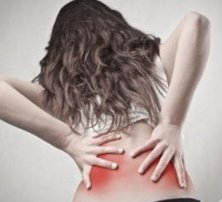
Back muscle spasms can cause both a dull pulling pain and a sharp, shooting pain. For the latter, there is a special term - lumbago. They often appear during sprains, during loads on improperly or insufficiently well-heated muscles, simply when bending over, lifting weights, when they “shoot in the lower back”. Such spasms often "radiate" to the legs.
Muscle spasms of the legs - mainly the problem of athletes and dancers, as well as people who have experienced muscle strain, torn ligaments and other similar injuries in the past. Sharp pains in the legs can occur as concomitant cramps - they just go away for a long time. They can be avoided if you properly warm up before exercise, do not make sudden movements, and avoid sprains.
Treatment of muscle spasms
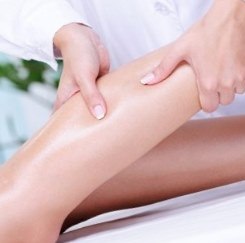
Spasms are usually taken by surprise, and in order to return to normal activities, it is necessary to urgently take action - often on your own. The following tricks will help with spasms.
Massage - from regular massaging to a full relaxing massage, which is best done after taking hot bath or the soul - in a word, when the muscles are already a little warmed up. It is better to massage the areas affected by spasm from the bottom up - in the direction of the lymph flow, without pressing too hard on the skin so as not to injure the nerve endings.
Reception contrast shower and other hardening measures are perfect as a preventive measure. With temperature changes, the vessels quickly narrow or, conversely, expand, which causes blood flow. Improved blood circulation promotes oxygenation of the muscles and improves general state fabrics.
warming up with the help of warm salt, a heating pad or wraps, they are suitable for hard-to-reach places. If you decide to try the latter, then you can do honey wraps - they perfectly warm up problem areas, but at the same time improve skin condition.
small warm-up - good remedy get rid of spasms quickly if there is no time for other methods. Even while in the city, at work, you can find a place and time to stretch a little, stretch your neck, stretch your legs, thus restoring blood circulation and eliminating an attack of spasms.
Exercises against muscle spasms of the neck, back, legs
as medicinal and preventive measures special types of exercises are also used to help stretch, stretch muscles and relieve spasm.
For spasms in the neck
Tilt your head forward and backward, stretching your muscles to the limit. Rhythmically repeat 5-8 times.
Head rotation alternately to the right and left shoulder. At the same time, the head, as it were, rolls over the bottom - the chin tends to the chest. After 4-5 rolls, we do the same exercise with the head thrown back - the back of the head tends to the shoulder blades.
10-15 times bow your head to the right and left shoulder.
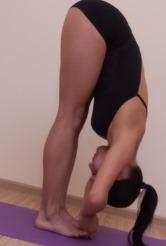
For back spasms
Stretch well and straighten your back, hands tend to the ceiling, rise to your toes. Then slowly, feeling every movement, lean forward, reaching for the floor with your hands. Bend over at the same time should be in the lower back, and not in the chest. Rise again and stretch up, bend in the back and stretch your arms behind your back. Repeat such slopes 4-6 times.
Become straight, put your feet not too wide. Hands freely lower along the body (you can also put them on the belt). In turn, move up and down either the right or the left shoulder. At the same time, try to keep the body itself calm.
Lie on the floor on your back and curl into the fetal position. Pull your knees to your stomach, press your head to your chest. Lie down in this state for 1-2 minutes. If there is a mat or the floor is soft, you can roll back and forth a little.
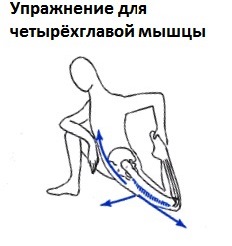
For spasms in the legs
For the muscles of the inner side of the thigh - sit in a semi-squat, putting it to the side left leg. Stretch your body to her toe. Repeat the same with the right leg.
For the quadriceps muscle - the “lunge” pose, exposing right leg forward, and throwing the left back. The weight is on the foot of the right foot and the knee of the left. Pull the left foot towards the back. Repeat by changing legs.
For calf muscles- put your right foot forward so that it is 15-20 cm from the floor. Pull the sock towards you, pull it away from you. Repeat on the other leg.
Most The best way to avoid spasms is to temper and play sports wisely. Remember to also take breaks and do not get carried away with sedentary work.
The main characteristics of the normal state of muscle tissue when a person performs any work are evenness and elasticity. A person can strain or relax his muscles, but there are situations when, regardless of his will, tension in some muscle groups arises involuntarily and persists for a long time. Such tension may cover large or small areas. It can be felt by a person as a strong and painful spasm or a slight twitching of a separate part of the muscles, or it can simply go unnoticed.
Why do muscle spasms appear, and why are they dangerous?
Muscle spasm or tension can manifest as:
- aching, itching, pressing pain in the neck or back, which may either increase or decrease;
- reflected (irradiating), head, eyes;
- loss of the ability to move your arms normally, turn your head, walk, etc.
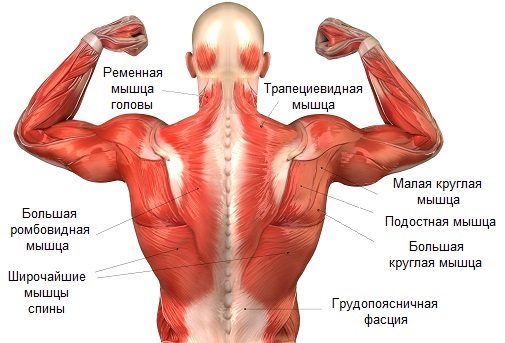
The doctor can detect such pain (trigger) zones during the examination. Most often they are located in the muscles that raise the scapula or straighten the back: trapezius, large rhomboid or other.
"Harmful" muscle tension
With spasm, the muscles and blood vessels, which leads to malnutrition and energy metabolism both in the muscle tissue itself and in the internal organs that innervate and nourish the pinched vessels and nerves.
For example, if there is a muscle spasm in the neck, then the compression (compression) of the vagus nerve caused by it will cause a violation of the innervation of the pancreas and subsequent deviations in the work of the gastrointestinal tract.
During spasm, muscle fibers contract, and additional energy is required to maintain them in constant tension. If the spasmodic area is large, and the tension continues for a long time, then the body is forced to spend a lot of energy on this irrational work.
Types of muscle spasms
Classification of muscle spasms is carried out not only by the nature of their occurrence, by strength pain, but also by the type of manifestation of spasms.
There are two types: clonic and tonic.
- Clonic spasm is characterized by a high frequency of changes in muscle tone. At the same time, the person himself can feel a slight twitching of the muscle.
- Tonic spasm is characterized by pain that covers not only the spasmodic muscle, but the entire back. In the people, this type of pain is called.
Pain comes on suddenly and abruptly. As soon as a person who has been in the wrong position for a long time makes the first movement, a strong sharp pain pierces his back.
Causes of muscle tension
Muscle spasms are involuntary contractions of muscle tissue. occurring during or after vigorous movement or exercise. These spasms are painful and can occur for a variety of reasons.
Research into the causes of spasms is still ongoing, but some general conclusions have already been made.
Fluid loss
As one of the causes of spasms is called hydration of the body. Many of us have noticed people in the fitness center who drink special sports drinks right during the workout. Their value and benefits are in the composition.
Vitamin drinks contain sodium, calcium, magnesium and potassium salts, which have a beneficial effect on the functioning of nerves and muscles. With heavy physical exertion, accompanied by increased sweating, the balance of these microelements in the human body can be disturbed, which leads to certain problems.

Excessive consumption of ordinary water can also lead to imbalance. Many people think that they need to drink a lot during exercise, and they believe that by drinking a little water after each exercise, they help the body recover.
However, this opinion is erroneous. Intense exercise increases sweating, and together with sweat, the body removes sodium from the body. By drinking a large amount of ordinary water, a person does not make up for the loss of sodium and other trace elements. This can only lead to a deterioration in the functioning of the muscles.
Exercising in a stuffy room only aggravates the situation: in addition to the fact that a person sweats more and loses sodium, the heat has a negative effect on the muscle mass itself. Result: fatigue and weakness come even faster.
lack of calcium
With a low level of calcium in the body, the amount of intracellular fluid in the cells of muscle and nerve fibers decreases. Nerve endings are exposed to excessive irritation, which leads to muscle spasm. Transmission Disruption nerve impulses makes it impossible to relax muscle fibers.
muscle fatigue
The next period after tension is muscle relaxation. Relaxation normally lasts longer than contraction. However, the basis of this process is sensory feedback between and muscles.
When the muscles get tired, they constrict, which leads to less stress on the tendons and more stress on the neuromuscular spindles. If this happens at the same time, then there is a violation of the process of contraction and relaxation of the muscles, and this becomes the cause of the spasm.
Carbohydrates
A low-carbohydrate diet can also negatively affect the state of muscle mass. Anyone who chooses such a diet should remember that it can easily cause muscle spasm. In this case, one should strive to avoid overvoltage.
Why does spasm occur?
Among the main causes of muscle spasm, the following should be noted:
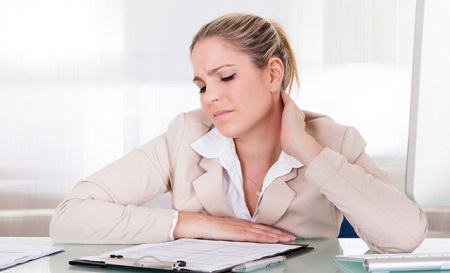
When to See a Doctor
If the pain does not go away for more than 3 days, and the muscles are inactive, or if numbness, tingling, weakness is felt in the back and neck, the patient should seek medical help.
Treatment
Medical care consists in the treatment of pain associated with compression of nerve endings in the affected area of the spine. If the pain during muscle spasm is caused by problems with the spine, then the treatment involves not only stopping the pain syndrome, but also identifying and eliminating the cause of the spasm.
As drug treatment doctors prescribe anti-inflammatory, sedatives. Medicines in the form of injections, tablets or ointments, prescribed by a doctor, will relieve swelling of the muscles, which will help soothe damaged muscle tissue in the back.
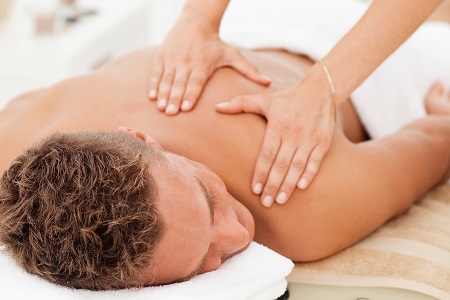
The most effective treatments chronic stress in muscles are:
- massotherapy,
- acupuncture,
- pharmacopuncture,
- spinal traction,
- osteopathy or manual therapy, other methods.
Prevention
The best way to prevent spasms is to keep the muscles in a flexible, trained state. Before starting physical activity, you should think about warming up the muscles and stretching. Useful exercises aimed at strengthening the muscles. Fans of active physical activities should get advice from a specialist trainer who will help to correct movements and choose the optimal set of exercises.
How to relieve spasm of the muscles of the back and neck, get rid of pain? Some practical advice How can this be done without the use of drugs:
The tissue of muscle mass naturally has a certain degree of elasticity and evenness when it is in a tense and relaxed state. But sometimes this condition can be accompanied by pain and helps to limit the patient's mobility.
There is an explanation for this: such a phenomenon as spasms carry precisely the squeezing state of nerve endings, and, accordingly, energy-exchange tissue disorders. Regardless of their strength and frequency of manifestation, it is worth contacting only professional specialists for treatment.
There may be many situations in which muscle spasms begin to manifest themselves. The most common prerequisites for their occurrence are the following environmental conditions and characteristics of the body:
- long stay in an uncomfortable state
- carrying bags on one shoulder at all times
- experienced stress, emotional tension
- draft, echoes of sciatica
- occurrence of hypothermia
- vertebral diseases
- metabolic disorders in the body
- serious injury
- diseases of the internal organs
- body strain, old age
There are a number of diseases that can also lead the back muscles to a spasmodic state - this lordosis, spondylosis,kyphosis,intervertebral hernia, arthritis, diabetes . Unpleasant sensations cause anxiety in people regardless of age.
For example, children school age may suffer from cramps due to prolonged sitting at school, and mature young people may notice tension in the back area after prolonged sitting at the computer. Often occurring stressful situations also negatively affect the human body, provoking spasmodic pain already in a chronic form.
Spasmodic varieties
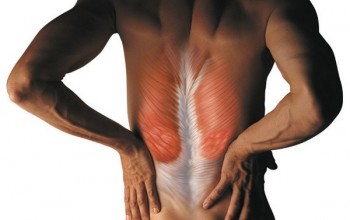 For people leading a sedentary lifestyle, there is a risk of tonic spasm: in a constantly wrong position, the muscular system becomes numb, causing pain.
For people leading a sedentary lifestyle, there is a risk of tonic spasm: in a constantly wrong position, the muscular system becomes numb, causing pain.
In this case, the muscles are in a hardened state, and when you touch the problem area, you feel strong pain that radiates in the spine.
The clonic type of spasms occurs in a periodic manner. It is accompanied by involuntary muscle contraction, which is accompanied by unpleasant rippling, ticking and aching.
The greatest trouble is that such spasms overtake a person at the most inopportune moments. At the first occurrence of such symptoms, you should immediately resort to medical practice. If two types of spasms occur at the same time, then we are talking about tonic-clonic convulsions.
Symptoms of spasms in the spinal muscles
The most significant changes that confirm damage to muscle tissue are severe pain: it is almost impossible to endure, especially when paired with restrictions on movement. With malfunctions due to injury or any other cause, intense stress is induced, leading to isolation of unaffected areas from damage.
In other words, for the purpose of self-preservation, blood vessels and nerve fibers cross, which leads to the occurrence of strong tingling, and subsequently to a more intense spasm.
As a rule, pain during the period of muscle tissue damage occurs instantly. To do this, it is enough to lift a weight or hit as a result of a fall, as the spasm will manifest itself again. Clinical manifestation spasm can have a different character, which directly depends on in which part of the back it occurs.
For example, during cervical myozyma, the disease manifests itself in the form acute pain on the right or left side of the neck. Severe disease can occur throughout the entire length of the arm and cause numbness up to the inability to move the fingers.
How to quickly relieve spasm of the muscles of the neck and back. Video
If the spasm appears in the area chest, then the pain occurs in the central part of the back or under the shoulder blade. A kind of signal is a pinched intercostal nerve. In professional terminology, it is called "intercostal neuralgia".
Often there are situations when a pinched nerve is accompanied by pain on the left side of the chest, then it can be confused with a heart attack. vascular system.
If the patient takes drugs to normalize the work of the heart, then he will not feel any improvement in his state of health, and as a result of the ECG examination, no problems with the work of the heart will be detected. In such a situation, only an anti-inflammatory drug prescribed by a doctor can become an auxiliary agent.
If the spasm affects the lumbar region of the back, then the pains are very strong, in medical terminology they are called lumbago. If such a situation is also accompanied by a pinched nerve in the thigh, then pain will be felt in the leg (sciatica).
However, when a "lumbago" occurs, the strongest acute pain and weakening in the legs will be felt in movement. In such a period lower limbs can give way, the patient may not even resist and lose balance.
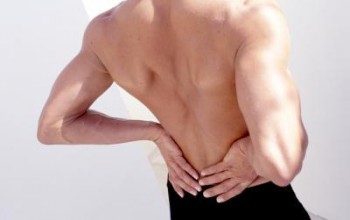 Muscle spasm has a noticeable wrecking effect on the entire human body as a whole. There are a large number of diseases that could be caused precisely by excessive muscle contraction.
Muscle spasm has a noticeable wrecking effect on the entire human body as a whole. There are a large number of diseases that could be caused precisely by excessive muscle contraction.
First of all, the spine can suffer from the occurrence of spasms. In the event that the treatment of the disease does not begin on time, then this leads to the occurrence of periodic pain in the lumbar region, which will last for quite a long time.
It happens that a spasm can lead to pinching of nerve endings, after which pain in the back will be constantly felt and at the same time affect other organs, wearing a aching character.
At the first signs of such a disease, you should immediately consult a doctor, because untimely muscle treatment leads to serious consequences for the human body.
If a spasm occurs in the neck, it is often accompanied by headaches. Moreover, the stronger the disease is launched, the echoes of the disease will be stronger and more difficult to correct. In this case, painkillers medications will be ineffective, and sometimes completely dangerous, if their quantity is abused.
At the site of the spasm, there is a weakening of the muscle, the appearance of dryness and cracks. The reason for this will be a blockage of the vascular system in this area and pore pollution. A patient with constant pain will complain of irritability, nervousness, decreased performance.
He will have problems with the movement and communication necessary for a normal life.
In order to prevent the occurrence of spasms in muscle tissues, you need to regularly maintain their tone. This can be achieved by swimming, physical activity. But you should not go to extremes and spend a lot of time in sports complexes: a 20-minute exercise in the morning or jogging in the evening is enough for an unprepared body.
The benefits of this load are especially noted if a person has sedentary work. In addition, the appearance of spasms can also be triggered by alcohol, fatty foods, caffeine, so do not neglect this, but monitor proper nutrition.
Therapeutic practice of spasm of the muscles of the dorsal region
Prevention can mean several methods at the same time. Remember that not all schemes can be mixed with each other, so to plan your ideal course, arm yourself with the recommendations of your personal doctor. The most commonly used for this treatment in set with:
- medicines
- massage treatments
- physical education
- reflexology (complex with acupuncture, contrast water procedures)
In this case, an independent order is highly discouraged as it can lead to aggravating consequences. It is not uncommon when the occurrence of spasms is caused by hidden pathological abnormalities that can only be diagnosed as a result of a thorough examination of the patient's body.
The speed and quality of spasm treatment takes place only in the case of a well-chosen method and exact observance of all the prescribed stages of the procedure. But with light foci of pain, you can help get rid of them yourself by doing a massage in the area of \u200b\u200bmuscle tension. If the discomfort does not recede within 3-4 days or longer, then by all means consult a doctor for an exact prescription.
Spasm treatment with medications
The drug version mainly means taking anti-inflammatory and sedative drugs.
Among them, the most famous are drugs
- Spazmalgon;
- Diclofenac;
- ibuprofen;
- Ketonal.
They are able to soothe the pain in the shortest possible time and prevent the occurrence of swelling in the area of damage. Ointments based on an analgesic component with a warming effect are also quite effective in the treatment of spasm.
The effectiveness of their activity will be enhanced if experienced massaging movements are made during rubbing. They allow you to relieve spasm and muscle tension as quickly as possible. To do this, the patient needs to lie on a hard surface and put a roller under his head. In time, such a massage should last about 10 minutes.
A rather important point is the fact that the part of the back that has been damaged cannot be warmed up in any case.
Initially, the medicine will anesthetize for a short time, and then complicate the situation by increasing the swelling of muscle tissue, increase pain, so additional exposure high temperatures fraught with unpredictable complications.
The most effective method of treatment in terms of physiotherapy is laser therapy and cryotherapy, however, they are done mainly in private clinics. And the most common method of medical practice for spasms today is novocaine blockade, manual procedures, the use of non-steroidal drugs with anti-inflammatory action.
If you once felt pain in a certain area of \u200b\u200bthe back, you should immediately go to the hospital to find out the causes of discomfort and prescribe proper treatment. In some cases, muscle spasm can go away on its own after a good rest.
However, if the situation does not change in three days, the help of the attending physician and a properly drawn up course are needed. The spasm that was launched can develop into chronic illness, which entails a violation in the performance of muscle tissue up to surgical intervention, which can negatively affect the performance and full life of a person as a whole.
Kneading by a qualified professional is valid and effective tool to relieve pain in the area of tingling. It can have a positive effect on the resumption of full blood supply to the vessels in the area of the clamped muscle, the activation of oxygen flow to all cells of the body, as well as relaxation.
The acupuncture technique is a relatively new way to eradicate spasm in practice, which originates in oriental medicine. It involves treatment with thin needles that can have a beneficial effect on the nerve endings of muscle tissue, while relaxing the integument and facilitating the activation of blood circulation in the body.
In fact, this approach is quite effective in combating spasms, but for it to have an effect, it is important to turn to a knowledgeable specialist.
The most effective methods
At the moment the most effective method elimination of unpleasant sensations in the back area is a stay in a calm state in combination with the use of non-steroidal medicines intended for the treatment of inflammation.
This is the most fast option"extraction" of spasm from the body. If the tension is strong enough, then the doctor prescribes an injection in the area of inflammation and guarantees the rapid absorption of the healing agent in the problem area where pain occurs, and, accordingly, its rapid elimination in parallel with relaxation.
Medicamentous recovery of spasms is allowed to be carried out only in case of medical prescription. You cannot fight on your own, relying on the rumors of a friend, because this is very serious and individual, and the wrong tactics can often only aggravate the situation instead of causing health improvements.
Only a true professional is able to determine the characteristics of the pain, its strength and the upcoming treatment.
Preventing a possible occurrence in reality is much easier than their long-term consequences. So it's best to stick to useful tips doctors on this occasion, in order to avoid the above complications with well-being, which still often depend on the weather.
The main way to take care of muscle tissue is in the form of regular exercise, active movement throughout the day. After all, when the muscles are in a normal tone in combination with proper human nutrition, their elasticity is also maintained in the norm, excluding the occurrence of problem situations.
An equally important preventive method is a good rest at night, as the muscles need to relax and fully restore their tone by the next working day. As insurance, it does not hurt to undergo a massage course of 8-10 sessions once a year in order to resume the correct operation of all its functions. And it is better to avoid hypothermia, so as not to overstrain the muscles once again.
It is always worth remembering that by taking care of your health, eating right and adhering to an active life position, a person is able to independently prolong his years and ensure good health. In the event of a sudden onset of the disease, it is worth responding to the first signals of the body immediately, because a timely visit to a specialist contributes not only to a quick recovery, but also to an increase in the overall effectiveness of treatment.
In order for the human body to work, its muscle tissue in a normal state must be even and elastic. Depending on his will, muscle tissue can be equally tense or equally relaxed. But we are constantly faced with a situation where areas (or even groups of muscle fibers and whole muscles) can appear in various places on the human body, in which tension, regardless of the desire of this person, is maintained and maintained. Such areas can be both large and very small, they can be perceived by consciousness as a spasm, tension, or they may not be noticed at all.
What is the harm from muscle tension and spasms?
- The first answer to this question lies on the surface: if the muscle is spasmodic, it compresses the blood vessels and nerve fibers. As a result, nutrition and energy-information exchange are disturbed both in the tissues of the muscle itself and in those internal organs to which nutrition and innervation are carried out by pinched vessels and nerves. For example, the vagus nerve is pinched in the neck area, impulses do not pass through it to the pancreas, which causes a violation of the innervation of the organ with corresponding enzymatic disorders of the gastrointestinal tract.
- The second negative result: a spasmodic muscle is a contracted muscle, ATP is required to maintain it in a tense state - certain energy costs. That is, to maintain the muscle in a state of tension, the body's own energy is spent, and the tension that has arisen not only does not benefit, but also harms the body (see paragraph 1). Given that the areas in which muscle tension has arisen can be quite extensive, and the tension is maintained constantly (even during sleep), the body's energy consumption for irrational and harmful work can be quite significant.
There is a third negative consequence, which we will talk about a little later.
Symptoms
Usually, when examined by a doctor, trigger (pain) zones can be found in the muscle that straightens the back or lifts the scapula, in the trapezius muscle, as well as in some others. With muscle tension, the patient may feel:
- aching, itching, pressing pain
- worsening or lessening of near-constant pain
- reflection of pain in the shoulder, eye, head
- the impossibility of making full range of hand movements or head turns.
Causes
The main causes of muscle spasms are:
- osteochondrosis, as well as its manifestations, expressed in the form of protrusions, herniated discs
- injuries and bruises of the spine, in which, in response to pain, muscle tension occurs and a trigger syndrome develops
- static muscle tension of a long-term nature, which can occur when a person sitting at a table or working at a computer has an incorrect posture, when carrying a bag on one shoulder (when one shoulder becomes higher than the other)
- emotional stress, causing an increase in muscle tone.
Why do muscle tension and spasm occur?
Muscle spasms- painful convulsive muscle contractions that occur involuntarily during or immediately after exercise.
The cause of spasms depends on various causes and is not yet fully understood. However, there are some general causes that determine the nature of the origin of muscle tension.
electrolytes
In the likely appearance of muscle spasms, the state of hydration of the human body plays a key role. In the gym, you can see people consuming vitamin drinks while exercising. They do it for a reason.
Vitamin drinks contain an optimally balanced concentration of sodium, potassium and calcium. These trace elements have a beneficial effect on the functioning of muscles and nerves. If the balance of these electrolytes is disturbed (which is possible when a person sweats a lot), problems can arise.
The same thing can happen if you start drinking a lot of water during exercise. Many people do a set and immediately drink water, do the next set and drink again. At the same time, they are sure that in this way they help their body.
Everyone knows that the human body is three-quarters water. During intense exercise, sodium is released along with sweat, which does not replace anything. When a person drinks water, he replaces one released liquid with another, which is not similar - it lacks a key mineral component. This may be the reason that the functioning of the muscles deteriorates.
In addition, when exercising in a very hot room, this process is complicated: a person not only sweats more, but also the heat negatively affects the muscles. The result is weakness and fatigue.
Calcium level
Another reason for the appearance of blocks is a low level of calcium in the body. If the calcium concentration decreases, the amount of intracellular fluid that surrounds the muscles and nerves decreases. As a result, the nerve endings are exposed to excessive irritation, and this, in turn, leads to the appearance of spasms.
muscle fatigue
After muscle tension, there is a period of relaxation that lasts longer than the contraction itself. But this relaxation process relies on sensory feedback between the spinal cord and the muscles, which connects the tendons and neuromuscular spindles.
If the muscles are tired, they contract. This increases the load on the neuromuscular spindles and reduces the load on the tendons. If this happens at the same time, the process of proper contraction / relaxation of the muscles is disrupted, which leads to spasm.
Large amount of carbohydrates
If a person adheres to a low-carbohydrate diet, then this may affect the state of the muscular system. Therefore, it must be remembered that such a diet can lead to muscle spasm and avoid overexertion.
Where do muscle spasms come from?
Consider this example: with osteochondrosis, outgrowths of bone tissue (having sharp edges) are formed along the edges of the intervertebral discs, the so-called osteophytes. These growths, with awkward turns or sudden movements, can easily injure surrounding tissues and nerves. As a result of the occurrence of pain, to protect the injured area, the brain receives a command to tighten the surrounding muscles. The stronger the pain, the greater the muscle tension. However, the stronger the muscle tension, the more painful. There is a trigger syndrome.
Two conclusions follow from this:
- to put the displaced vertebra in place, you must first relax the surrounding muscles
- muscle spasm is a response to pain.
Another example: a fracture occurred, in response to pain, the surrounding muscles tightened. The bone subsequently grew together, but at the site of the fracture, muscle spasm remained for life. It compresses blood vessels and nerves, thereby limiting mobility.
Thus, the first reason for the formation of muscle spasms can be attributed to all kinds of injuries, in which, in response to pain, the muscles tense up and a trigger syndrome develops. For this reason, the formation of spasms can occur from birth due to birth trauma. In general, childbirth is a very big stress for both the child's body and the mother's body. They can be very traumatic. Spasms of the cervical muscles (especially the suboccipital), disrupting the nutrition of the brain, in most people very often occur and persist for life precisely as a result of birth injuries.
The second reason for the formation of muscle spasms is prolonged static muscle tension, which can occur when a student is seated incorrectly at a desk, a person at a computer, and also when carrying a bag on the same shoulder (in this case, one shoulder becomes higher than the other). If such tension is maintained for a long time, the phenomenon of inhibition occurs, the stressed state for the cells becomes habitual. If a specially tense area is not relaxed and mobilized, tension will constantly remain in it.
The third cause of muscle spasms can be emotional stress. To overcome a stressful situation at the moment of its occurrence, the body mobilizes all internal resources: muscle tone increases, heart rate accelerates, certain hormones are released into the blood, digestion slows down. This reaction is required for the survival of the organism - providing an appropriate reaction under threatening conditions. After overcoming the threat, the body returns to normal functioning and relaxes. But under certain circumstances there is no return to normal. This leads to the fact that a person seems to be in a state of stress all the time, for him chronic muscle tensions, which are characteristic of a stressful situation, become chronic. At the same time, the presence of muscle tone during chronic stress is far from its only negative consequence. In addition, disorders of the cardiovascular and digestive systems develop (up to the occurrence of serious diseases), a person becomes irritable, and his working capacity decreases.
When should you see a doctor?
- If the muscles are inactive and pain is felt during the first three days.
- If muscle spasms in the back or neck area are accompanied by numbness, tingling or weakness, you should immediately consult a doctor.
How to avoid recurrence of blocks, muscle tension and spasms.
The best way to prevent re-spasm is to keep the muscles strong, flexible, and adequately trained. Before starting active physical exercises, do not forget about stretching, do exercises to strengthen the muscles. Avid athletes should definitely consult with a coach who will be able to correct those mechanisms of movements that are necessary for this sport.



